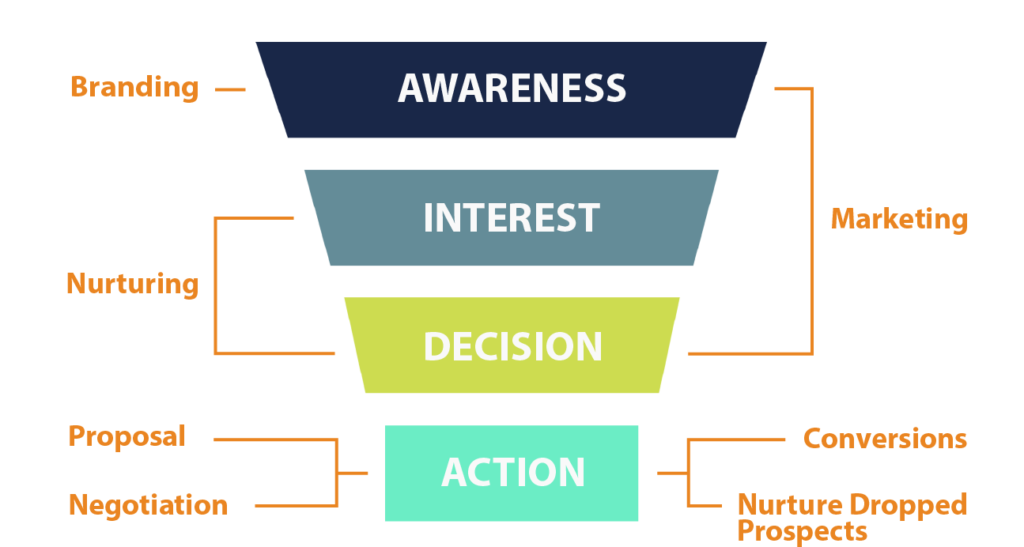Have you ever heard the term “If you’re not measuring it, you’re not managing it?”. Well, the sales funnel is just that; a visual representation of conversion metrics of potential customers navigating through different stages of a funnel, from the initial contact leading to a purchase.
What are the benefits of a sales funnel:
For starters, the funnel is a dynamic data landscape that can capture rich metrics allowing businesses to adjust the strategy along their sales pipeline. Fundamentally, we need to make sure metrics are collected and analyzed accurately. A miscalculation could steer the set of strategies in the wrong direction, potentially affecting your conversions.
Benefits:
- Forecast sales and revenue
- Identify stalled or dropped opportunities
- Adjust and improve the nurturing process for each stage
- Measure conversions per stage
- Provide a better understanding of potential customers navigating through each stage
The Stages of the sales Funnel

Stage one:Awareness
Stage one is best described as the discovery phase, where individuals formulate their first impression of a brand as they become aware of their services or products through various communication channels. Branding plays a crucial role in this stage. Having a solid branding identity can highly influence an individual’s perceptions based on a set of experiences or encounters with the different elements of a brand.
communication channels:
- Word of mouth
- Email campaigns
- Digital ads campaigns
- Social media engagements
- Print literature
- Affiliate program
stage two:Interest
The interest stage arrives as prospects begin to form a positive perception towards a brand and seek to research and learn more about a product or service. Prospects will quickly try to determine the best solution to their problem and compare similar brands. The research may vary across the board, mainly on need and/or preference. The most common: cost, return on investment(ROI), features, and integration capabilities.
on the business end:
A Nurturing Strategy is implemented on the sales pipeline. The approach consists of creating educational and awareness content that provides problem-solving solutions literature that establishing trust and credibility. A selling approach at this early stage could potentially damage the prospect’s perception of the brand and steer them away.
Nurturing formats:
- Webinars
- Demos
- White Papers
- Case Studies
- Product Line Cards
- Knowledge Articles
- Help Guides
stage three:Decision
on the business end:
On a granular level, marketers should have compiled rich data describing the prospects problems, and current concerns. The most effective way of collecting granular level data is by setting key touchpoints along the customer journey. The result, a scoring system approach that ranks prospects as a persona or lead type (this is employed on the sales pipeline side).
Nurturing formats:
- Live Demo
- Video Call
- Help Guides
stage Four:Action
The last stage highlights the success rate of all the collaborative efforts along the funnel. Metrics are collected, providing rich insights into why certain deals were dropped, why some were converted faster than others, and which elements had tremendous weight into the prospect’s final decision.





